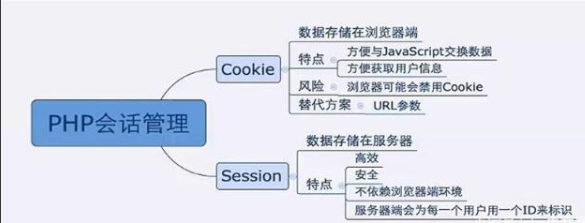[tcp] nginx 七層負載均衡 nginx負載均衡概述 當我們的 Web 伺服器直接面向用戶,往往要承載大量併發請求,單台伺服器難以負荷,我使用多台 Web 伺服器組成集群,前端使用 負載均衡,將請求分散的打到我們的後端伺服器集群中,實現負載的分發。那麼會大大提升系統的吞吐率、請求性能、高容災 ...
[tcp]
nginx 七層負載均衡
nginx負載均衡概述
當我們的Web伺服器直接面向用戶,往往要承載大量併發請求,單台伺服器難以負荷,我使用多台Web伺服器組成集群,前端使用Nginx負載均衡,將請求分散的打到我們的後端伺服器集群中,實現負載的分發。那麼會大大提升系統的吞吐率、請求性能、高容災

所以說當海量用戶請求過來以後,它同樣是請求調度節點,調度節點將用戶的請求轉發給後端對應的服務節點,服務節點處理完請求後在轉發給調度節點,調度節點最後響應給用戶節點。這樣也能實現一個均衡的作用,那麼Nginx則是一個典型的SLB
負載均衡的叫法有很多:
負載均衡
負載
Load Balance
LB
公有雲中叫法
SLB 阿裡雲負載均衡
QLB 青雲負載均衡
CLB 騰訊雲負載均衡
ULB ucloud負載均衡
常見的負載均衡的軟體
Nginx
Haproxy
LVS
四層負載均衡
所謂四層負載均衡指的是OSI七層模型中的傳輸層,那麼傳輸層Nginx已經能支持TCP/IP的控制,所以只需要對客戶端的請求進行TCP/IP協議的包轉發就可以實現負載均衡,那麼它的好處是性能非常快、只需要底層進行應用處理,而不需要進行一些複雜的邏輯。

七層負載均衡
七層負載均衡它是在應用層,那麼它可以完成很多應用方面的協議請求,比如我們說的http應用的負載均衡,它可以實現http信息的改寫、頭信息的改寫、安全應用規則控制、URL匹配規則控制、以及轉發、rewrite等等的規則,所以在應用層的服務裡面,我們可以做的內容就更多,那麼Nginx則是一個典型的七層負載均衡SLB

區別
四層負載均衡數據包在底層就進行了分發,而七層負載均衡數據包則是在最頂層進行分發、由此可以看出,七層負載均衡效率沒有四負載均衡高。
但七層負載均衡更貼近於服務,如:http協議就是七層協議,我們可以用Nginx可以作會話保持,URL路徑規則匹配、head頭改寫等等,這些是四層負載均衡無法實現的。
註意:四層負載均衡不識別功能變數名稱,七層負載均衡識別功能變數名稱
nginx負載均衡配置場景
Nginx要實現負載均衡需要用到proxy_pass代理模塊配置.
Nginx負載均衡與Nginx代理不同地方在於,Nginx的一個location僅能代理一臺伺服器,而Nginx負載均衡則是將客戶端請求代理轉發至一組upstream虛擬服務池.

準備環境
| 角色 | 外網IP(NAT) | 內網IP(LAN) | 主機名 |
|---|---|---|---|
| LB01 | eth0:10.0.0.5 | eth1:172.16.1.5 | lb01 |
| web01 | eth0:10.0.0.7 | eth1:172.16.1.7 | web01 |
| web02 | eth0:10.0.0.8 | eth1:172.16.1.8 | web02 |
在web01上配置nginx
[root@web01 ~]# cd /etc/nginx/conf.d/
[root@web01 conf.d]# cat node.conf
server {
listen 80;
server_name node.drz.com;
location / {
root /node;
index index.html;
}
}
[root@web01 conf.d]# mkdir /node
[root@web01 conf.d]# echo "Web01..." > /node/index.html
[root@web01 conf.d]# systemctl restart nginx在web02上配置nginx
[root@web02 ~]# cd /etc/nginx/conf.d/
[root@web02 conf.d]# cat node.conf
server {
listen 80;
server_name node.drz.com;
location / {
root /node;
index index.html;
}
}
[root@web02 conf.d]# mkdir /node
[root@web02 conf.d]# echo "Web02..." > /node/index.html
[root@web02 conf.d]# systemctl restart nginx在lb01上配置nginx負載均衡
[root@lb01 ~]# cd /etc/nginx/conf.d/
[root@lb01 conf.d]# cat node_proxy.conf
upstream node {
server 172.16.1.7:80;
server 172.16.1.8:80;
}
server {
listen 80;
server_name node.drz.com;
location / {
proxy_pass http://node;
include proxy_params;
}
}
[root@lb01 conf.d]# systemctl restart nginx準備Nginx負載均衡調度使用的proxy_params
[root@Nginx ~]# vim /etc/nginx/proxy_params
proxy_set_header Host $http_host;
proxy_set_header X-Real-IP $remote_addr;
proxy_set_header X-Forwarded-For $proxy_add_x_forwarded_for;
proxy_connect_timeout 30;
proxy_send_timeout 60;
proxy_read_timeout 60;
proxy_buffering on;
proxy_buffer_size 32k;
proxy_buffers 4 128k;
打開瀏覽器測試:真確結果刷新web01/web02切換
解決 :負載均衡的過程中,當一臺機器的後端服務宕機了,不影響用戶
proxy_next_upstream error timeout http_500 http_502 http_503 http_504;
vim upstream.conf
upstream node {
server 172.16.1.7;
server 172.16.1.8;
}
server {
listen 80;
server_name blog.drz.com;
location / {
proxy_pass http://node;
proxy_next_upstream error timeout http_500 http_502 http_503 http_504;
include proxy_params;
}
}
nginx負載均衡的調度演算法
| 調度演算法 | 概述 |
|---|---|
| 輪詢(rr) | 按時間順序逐一分配到不同的後端伺服器(預設) |
| weight(wrr) | 加權輪詢,weight值越大,分配到的訪問幾率越高 |
| ip_hash | 每個請求按訪問IP的hash結果分配,這樣來自同一IP的固定訪問一個後端伺服器 |
| url_hash | 按照訪問URL的hash結果來分配請求,是每個URL定向到同一個後端伺服器 |
| least_conn | 最少鏈接數,那個機器鏈接數少就分發 |
upstream load_pass {
server 10.0.0.7:80;
server 10.0.0.8:80;
}
upstream load_pass {
server 10.0.0.7:80 weight=5;
server 10.0.0.8:80;
}
#如果客戶端都走相同代理, 會導致某一臺伺服器連接過多
upstream load_pass {
ip_hash;
server 10.0.0.7:80 weight=5;
server 10.0.0.8:80;
}
nginx後端的狀態
端Web伺服器在前端Nginx負載均衡調度中的狀態
| 狀態 | 概述 |
|---|---|
| down | 當前的server暫時不參與負載均衡 |
| backup | 預留的備份伺服器 |
| max_fails | 允許請求失敗的次數 |
| fail_timeout | 經過max_fails失敗後, 服務暫停時間 |
| max_conns | 限制最大的接收連接數 |
upstream load_pass {
#不參與任何調度, 一般用於停機維護
server 10.0.0.7:80 down;
}
upstream load_pass {
server 10.0.0.7:80 down;
server 10.0.0.8:80 backup;
server 10.0.0.9:80 max_fails=1 fail_timeout=10s;
}
location / {
proxy_pass http://load_pass;
include proxy_params;
}
upstream load_pass {
server 10.0.0.7:80;
server 10.0.0.8:80 max_fails=2 fail_timeout=10s;
}
upstream load_pass {
server 10.0.0.7:80;
server 10.0.0.8:80 max_conns=1;
}Nginx負載均衡健康檢查
在Nginx官方模塊提供的模塊中,沒有對負載均衡後端節點的健康檢查模塊,但可以使用第三方模塊。
nginx_upstream_check_module來檢測後端服務的健康狀態。
第三方模塊項目地址:TP
1.安裝依賴包
[root@lb02 ~]# yum install -y gcc glibc gcc-c++ pcre-devel openssl-devel patch2.下載nginx源碼包以及nginx_upstream_check模塊第三方模塊
[root@lb02 ~]# wget http://nginx.org/download/nginx-1.14.2.tar.gz
[root@lb02 ~]# wget https://github.com/yaoweibin/nginx_upstream_check_module/archive/master.zip3.解壓nginx源碼包以及第三方模塊
[root@lb02 ~]# tar xf nginx-1.14.2.tar.gz
[root@lb02 ~]# unzip master.zip4.進入nginx目錄,打補丁(nginx的版本是1.14補丁就選擇1.14的,p1代表在nginx目錄,p0是不在nginx目錄)
[root@lb02 ~]# cd nginx-1.14.2/
[root@lb02 nginx-1.14.2]# patch -p1 <../nginx_upstream_check_module-master/check_1.14.0+.patch
./configure --prefix=/etc/nginx --sbin-path=/usr/sbin/nginx --modules-path=/usr/lib64/nginx/modules --conf-path=/etc/nginx/nginx.conf --error-log-path=/var/log/nginx/error.log --http-log-path=/var/log/nginx/access.log --pid-path=/var/run/nginx.pid --lock-path=/var/run/nginx.lock --http-client-body-temp-path=/var/cache/nginx/client_temp --http-proxy-temp-path=/var/cache/nginx/proxy_temp --http-fastcgi-temp-path=/var/cache/nginx/fastcgi_temp --http-uwsgi-temp-path=/var/cache/nginx/uwsgi_temp --http-scgi-temp-path=/var/cache/nginx/scgi_temp --user=nginx --group=nginx --with-compat --with-file-aio --with-threads --with-http_addition_module --with-http_auth_request_module --with-http_dav_module --with-http_flv_module --with-http_gunzip_module --with-http_gzip_static_module --with-http_mp4_module --with-http_random_index_module --with-http_realip_module --with-http_secure_link_module --with-http_slice_module --with-http_ssl_module --with-http_stub_status_module --with-http_sub_module --with-http_v2_module --with-mail --with-mail_ssl_module --with-stream --with-stream_realip_module --with-stream_ssl_module --with-stream_ssl_preread_module --add-module=/root/nginx_upstream_check_module-master --with-cc-opt='-O2 -g -pipe -Wall -Wp,-D_FORTIFY_SOURCE=2 -fexceptions -fstack-protector-strong --param=ssp-buffer-size=4 -grecord-gcc-switches -m64 -mtune=generic -fPIC' --with-ld-opt='-Wl,-z,relro -Wl,-z,now -pie'
[root@lb02 nginx-1.14.2]# make && make install5.在已有的負載均衡上增加健康檢查的功能
[root@lb01 conf.d]# cat proxy_web.conf
upstream node {
server 172.16.1.7:80 max_fails=2 fail_timeout=10s;
server 172.16.1.8:80 max_fails=2 fail_timeout=10s;
check interval=3000 rise=2 fall=3 timeout=1000 type=tcp;
#interval 檢測間隔時間,單位為毫秒
#rise 表示請求2次正常,標記此後端的狀態為up
#fall 表示請求3次失敗,標記此後端的狀態為down
#type 類型為tcp
#timeout 超時時間,單位為毫秒
}
server {
listen 80;
server_name node.drz.com;
location / {
proxy_pass http://node;
include proxy_params;
}
location /upstream_check {
check_status;
}
}nginx負載均衡會話保持
在使用負載均衡的時候會遇到會話保持的問題,可通過如下方式進行解決。
1.使用nginx的ip_hash,根據客戶端的IP,將請求分配到對應的IP上
2.基於服務端的session會話共用(NFS,MySQL,memcache,redis,file)
在解決負載均衡繪畫問題,我們需要瞭解session和cookie的區別。
瀏覽器端存的是cookie每次瀏覽器發請求到服務端時,報文頭是會自動添加cookie信息的。
服務端會查詢用戶的cookie作為key去存儲里找對應的value(session)
同意功能變數名稱下的網站的cookie都是一樣的,所以無論幾台伺服器,無論請求分配到哪一臺伺服器上同一用戶的cookie是不變的。也就是說cookie對應的session也是唯一的。所以,這裡只要保證多台業務伺服器訪問同一個共用存儲伺服器(NFS,MySQL,memcache,redis,file)就行了。
1.web01上配置nginx
[root@web01 conf.d]# cat php.conf
server {
listen 80;
server_name php.drz.com;
root /code/phpMyAdmin-4.8.4-all-languages;
location / {
index index.php index.html;
}
location ~ \.php$ {
fastcgi_pass 127.0.0.1:9000;
fastcgi_param SCRIPT_FILENAME $document_root$fastcgi_script_name;
include fastcgi_params;
}
}
[root@web01 conf.d]# systemctl restart nginx2.安裝phpmyadmin (web01和web02上都裝)
[root@web01 conf.d]# cd /code
[root@web01 code]# wget https://files.phpmyadmin.net/phpMyAdmin/4.8.4/phpMyAdmin-4.8.4-all-languages.zip
[root@web01 code]# unzip phpMyAdmin-4.8.4-all-languages.zip3.配置phpmyadmin遠程連接資料庫
[root@web01 code]# cd phpMyAdmin-4.8.4-all-languages/
[root@web01 phpMyAdmin-4.8.4-all-languages]# cp config.sample.inc.php config.inc.php
[root@web01 phpMyAdmin-4.8.4-all-languages]# vim config.inc.php
/* Server parameters */
$cfg['Servers'][$i]['host'] = '172.16.1.51';4.配置授權
chown -R www.www /var/lib/php/

[root@web01 phpMyAdmin-4.8.4-all-languages]# ll /var/lib/php/session/
總用量 4
-rw-------. 1 www www 2424 8月 21 18:41 sess_e96b27a6a628be47745a10a36e2fcd5a 

5.將web01上配置好的phpmyadmin以及nginx的配置文件推送到web02主機上
[root@web01 code]# scp -rp phpMyAdmin-4.8.4-all-languages [email protected]:/code/
[root@web01 code]# scp /etc/nginx/conf.d/php.conf [email protected]:/etc/nginx/conf.d/6.在web02上重載Nginx服務
[root@web02 code]# systemctl restart nginx7.授權
[root@web02 code]# chown -R www.www /var/lib/php/8.接入負載均衡
[root@lb01 conf.d]# vim proxy_php.com.conf
upstream php {
server 172.16.1.7:80;
server 172.16.1.8:80;
}
server {
listen 80;
server_name php.drz.com;
location / {
proxy_pass http://php;
include proxy_params;
}
}
[root@lb01 conf.d]# nginx -t
nginx: the configuration file /etc/nginx/nginx.conf syntax is ok
nginx: configuration file /etc/nginx/nginx.conf test is successful
[root@lb01 conf.d]# systemctl restart nginx使用負載均衡的輪詢功能之後,會發現,如果將session保存在本地文件的話,永遠都登錄不上去。drz.com
使用redis解決會話登錄問題
1.安裝redis記憶體資料庫
[root@db01 ~]# yum install redis -y2.配置redis監聽在172.16.1.0網段上
[root@db01 ~]# sed -i '/^bind/c bind 127.0.0.1 172.16.1.51' /etc/redis.conf3.啟動redis
[root@db01 ~]# systemctl start redis
[root@db01 ~]# systemctl enable redis4.php配置session連接redis
#1.修改/etc/php.ini文件
[root@web ~]# vim /etc/php.ini
session.save_handler = redis
session.save_path = "tcp://172.16.1.51:6379"
;session.save_path = "tcp://172.16.1.51:6379?auth=123" #如果redis存在密碼,則使用該方式
session.auto_start = 1
#2.註釋php-fpm.d/www.conf裡面的兩條內容,否則session內容會一直寫入/var/lib/php/session目錄中
;php_value[session.save_handler] = files
;php_value[session.save_path] = /var/lib/php/session5.重啟php-fpm
[root@web01 code]# systemctl restart php-fpm6.將web01上配置好的文件推送到web02
[root@web01 code]# scp /etc/php.ini [email protected]:/etc/php.ini
[root@web01 code]# scp /etc/php-fpm.d/www.conf [email protected]:/etc/php-fpm.d/www.conf 5.上web02上重啟php-fpm
[root@web02 code]# systemctl restart php-fpm6.redis查看數據
[root@db01 redis]# redis-cli
127.0.0.1:6379> keys *
1) "PHPREDIS_SESSION:1365eaf0490be9315496cb7382965954"
cookie和session的區別




